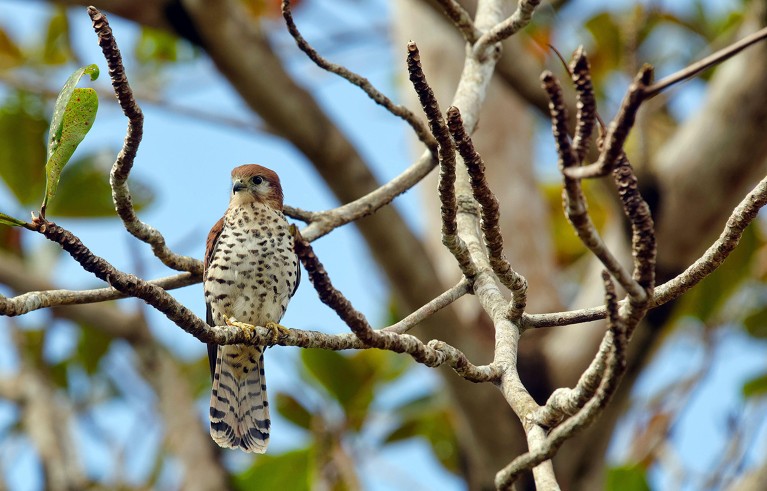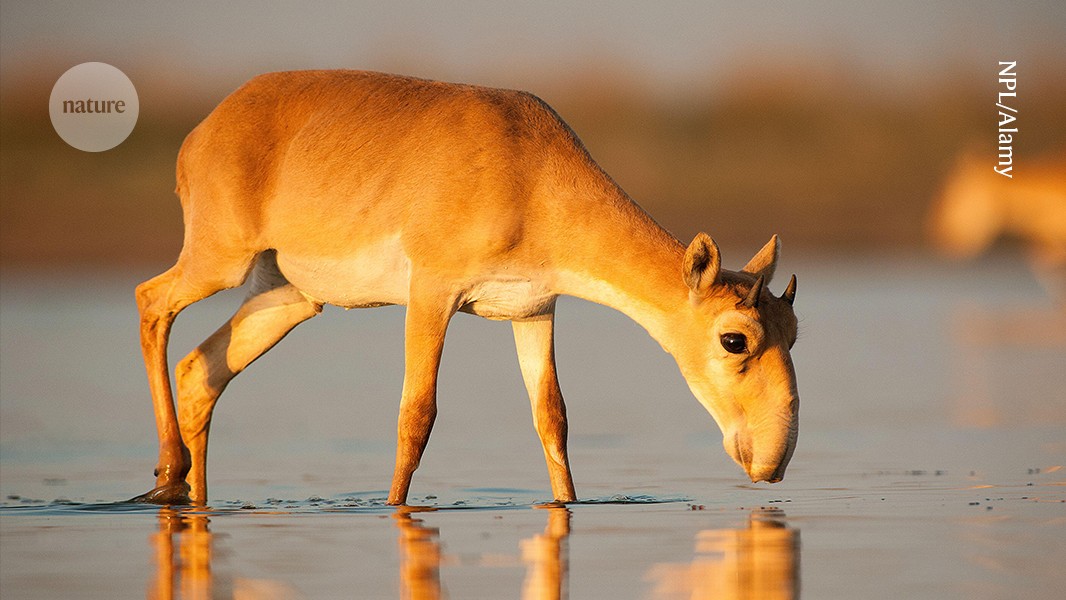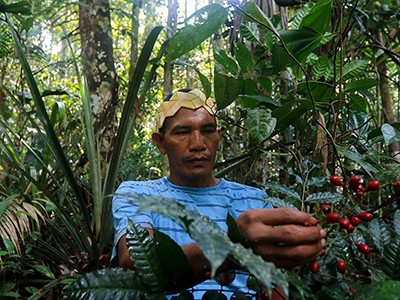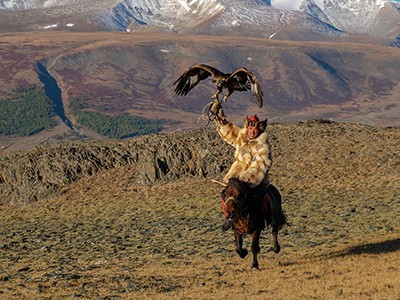Before They Vanish: Saving Nature’s Populations — and Ourselves Paul R. Ehrlich et al. Johns Hopkins University Press (2024)
Biologist Paul Ehrlich has a history of failed predictions. For example, his 1968 book The Population Bomb forecasted mass famine around the world owing to growth in human numbers outpacing food production. In Before They Vanish, however, it’s hard to see him being wrong. Ehrlich and his colleagues present powerful evidence of global wildlife decline and more extinctions to come. Yet, it’s a pessimistic portrayal, which undersells reasons to be optimistic about conservation. This matters because optimism has a contribution to make in slowing extinctions.
Conservation policies must address an overlooked issue: how war affects the environment
The book opens with the story of the Steller’s sea cow (Hydrodamalis gigas), an eight-metre-long mammal, which was described in 1741 by a German zoologist marooned in the Bering Strait. Within just 27 years, it was extinct. The authors use this well-known example to explain how extinctions can cascade through an ecosystem, by showing how the local extinction of sea otters (Enhydra lutris), which were hunted for the fur trade, contributed to the sea cows’ demise. The loss of the otters allowed a population explosion of their sea urchin prey, which overgrazed the kelp forests on which the sea cows depended.
A reader new to the science of extinction will learn a lot from this book. Many underpinning concepts in conservation biology are expertly explored, and the authors take a novel angle by emphasizing the role of population extinction as a step to species extinction. They go on to present a compendium of extinctions, from birds to bivalves, pangolins to pandas, and marine fish to microorganisms.
Grief for what has been lost permeates the book. And the authors, whose careers have spanned a period of dramatic wildlife decline, use personal anecdotes and rich imagery to powerful effect. Wholescale destruction across evolutionary relationships is described as “mutilation of the tree of life”. Individuals who remain in a landscape long after their population is doomed to extinction are “the living dead”.
Yet, I found the book unsatisfying and, worse, it misses opportunities to inspire readers to support conservation action.
‘Cocaine of the seas’ — how a luxury food is wreaking ecological mayhem
It is unsatisfying because it avoids tackling difficult questions about the extent to which human well-being really depends on the persistence of threatened species, and it fails to address trade-offs that must be made on a crowded planet. It misses opportunities because, despite the cover blurb promising insights into how species and ecosystems can be saved, it lacks a positive vision for the role of conservation and does little to showcase conservation successes.
The authors shy away from addressing, or even acknowledging, the environmentalist paradox: that human well-being, by most measures, has increased even as we have destroyed natural ecosystems1. They argue that extinctions erode the conditions that make life on Earth possible, talking about “existential threats” and “a ghastly future”. However, it is difficult to argue that this is true for the extinction of the Bramble Cay melomys (Melomys rubicola), for example, a rodent found only on an uninhabited island off Australia. Do we really need to say that extinctions of populations threaten humanity’s existence to make a case that they matter?
The authors don’t explore the difficult trade-offs that need to be negotiated to ensure the 8.2 billion humans that currently share this planet can thrive. When criticizing the Belt and Road Initiative, China’s massive infrastructure programme, they ignore why many leaders of low- and middle-income countries, desperate for better transport links and energy security, have embraced it. Similarly, biologist Edward Wilson’s controversial calls to protect half of Earth for nature, are presented as a solution to the pressures on remaining wildlife, with no discussion of what this means for people in rural areas who inhabit much of this land.

Once the most endangered bird species, Mauritius kestrel (Falco punctatus) numbers are bouncing back through conservation projects.Credit: Fabrice Bettex Photography/Alamy
The authors mention that they themselves will find it difficult to make the behavioural changes needed to reduce their personal impacts on nature (the use of the future tense is interesting here), but how much more difficult is this for people living at the other end of the global income distribution?
Across the environmental movement in general, and in conservation specifically, there are increasing calls for more optimism. Marine ecologist Nancy Knowlton has emphasized the value of sharing stories of conservation successes, rather than writing ever-more-sophisticated obituaries for nature2. Although bad news attracts attention, it does not tend to empower or inspire action3.
Why repairing forests is not just about planting trees
I would have liked to see the authors explore conservation success with the same narrative flair as the descriptions of extinction that make up the bulk of the book. There are so many examples of conservation efforts preventing extinction of populations and even species. To list just a few: the recovery of the saiga antelope (Saiga tatarica), resulting in it being downlisted from critically endangered to near threatened last year; the recovery of the Mauritius kestrel (Falco punctatus) from four individuals in 1974 to a thriving population today; or the rebuilding of breeding bird communities following rat eradication on numerous offshore islands around the world.
Ehrlich and his co-authors rightly dismiss de-extinction efforts as being a costly distraction. But they seem overly negative about other approaches to conservation that they cover. Even the rare positive cases they mention are quickly turned around. For instance, the reintroduction of the extinct-in-the-wild Arabian oryx (Oryx leucoryx) ends with concerns over rising poaching and habitat destruction. The section on legal measures is largely a critique of the implementation of the US Endangered Species Act rather than summarizing where legal protection has contributed to the effective conservation of threatened species.
Most frustratingly, despite a revolution in conservation evidence over the past 15 years, there’s little reference to evaluating the impact of different approaches or synthesizing such evidence4. Tools such as the Conservation Evidence database are making it easier for conservation practitioners to access information on the impact of interventions on ecological outcomes, and there is a rapidly expanding literature using causal-inference methods to evaluate the impact of conservation policies at scale5.
The book dismisses out of hand many actions that, although not solving underlying drivers of extinction, can make an important local contribution to conservation. Certification schemes, such as those that charge a premium for coffee grown in ways that retain some natural tree cover, are apparently an “industry ploy”. Perhaps no coffee production would be better for biodiversity in these landscapes, but given that a lot of people really like coffee, might certification have a part to play?
Fall of the wild: why pristine wilderness is a human-made myth
Comments about former US president Donald Trump will date the book and risk perpetuating unhelpful and untrue ideas that biodiversity conservation is associated with a particular political position. Perhaps more off-putting for many potential supporters of conservation is the undertone of environmental misanthropy. The authors sound almost ambivalent about a future collapse of human civilization. They acknowledge that collapse owing to climate change would be catastrophic for biodiversity as well as for humanity, but imply that such a collapse caused by the “crumbling of the debt pyramid”, would be welcome because it would take the pressure off of nature.
The authors’ central thesis is that only economic and demographic transformation can ultimately prevent continued extinction. This is manifestly true. However, conservation science, policy and practice need to ensure that as much nature as possible makes it through to that time when human populations have stabilized, extreme poverty has been eradicated and technological and social changes have reduced pressures on the natural world6.
Although I share the authors’ grief for the natural wonders that have been lost, I think that hope is a more powerful emotion. I want anyone interested in the extinction crisis to know about the successes that conservation is having, the increasingly sophisticated use of evidence to improve effectiveness, and the dedication of people from all walks of life and corners of the planet who are committing their energy to nature recovery. Because, ‘before they vanish’, there is still so much we can do.






